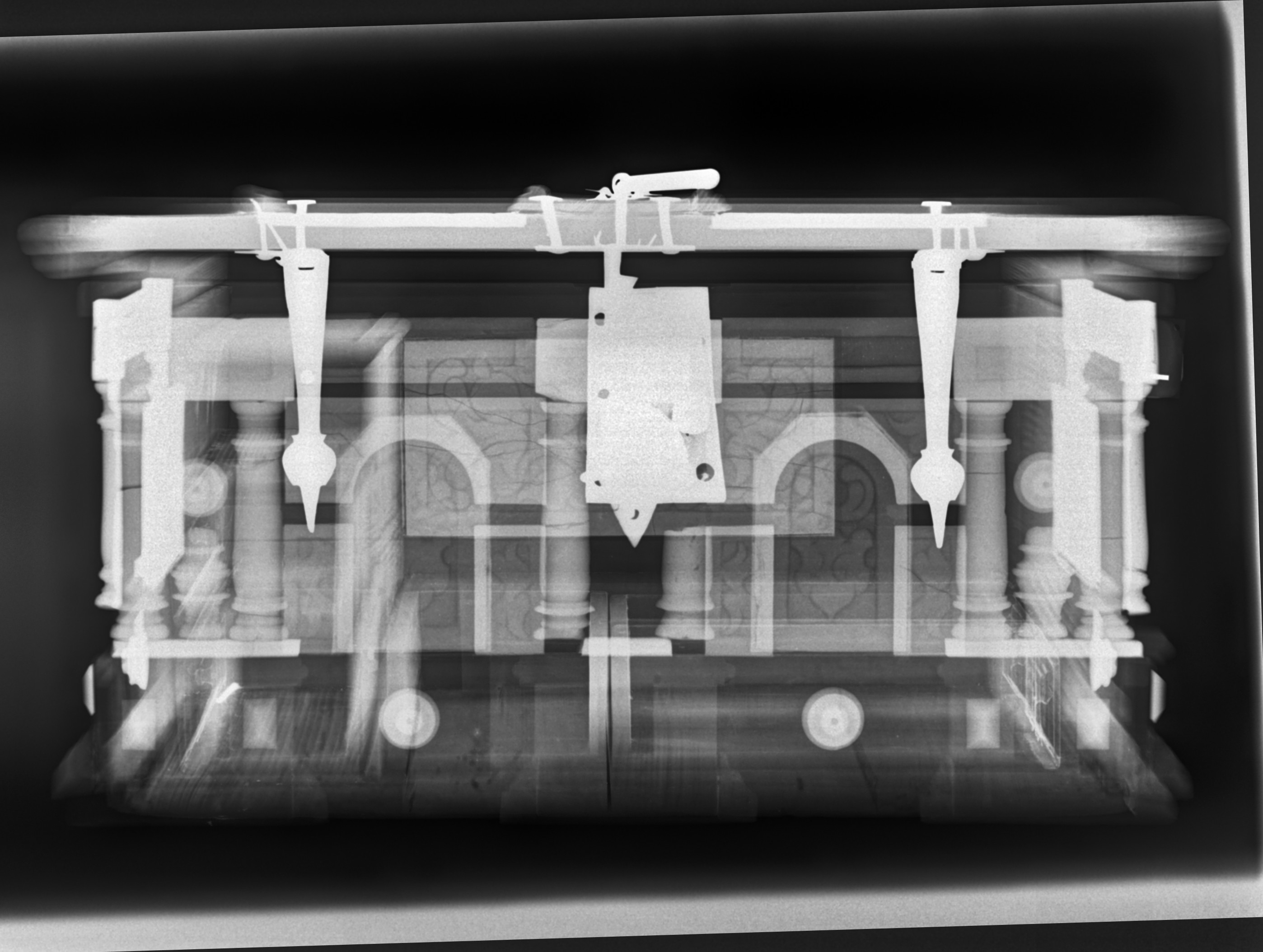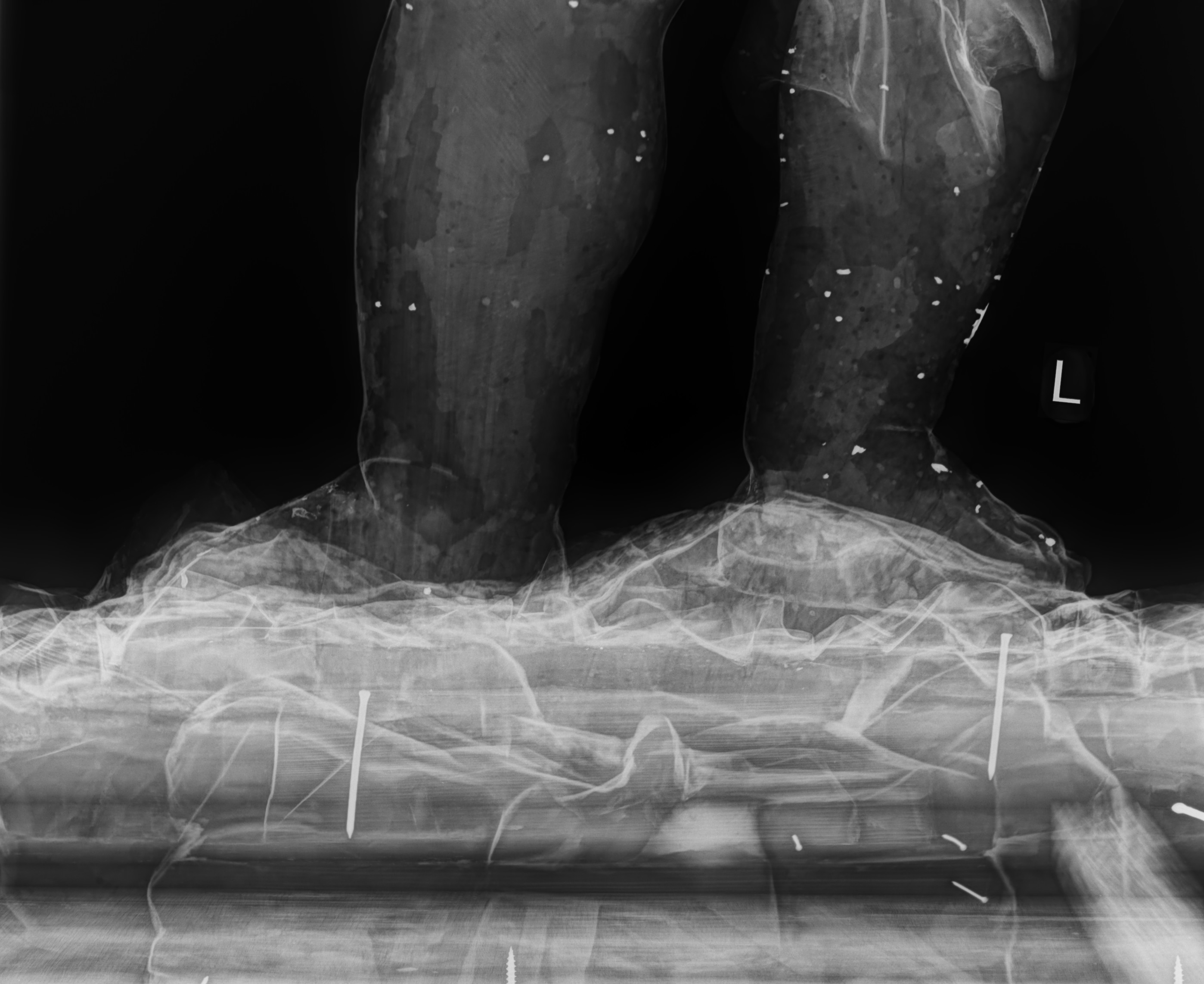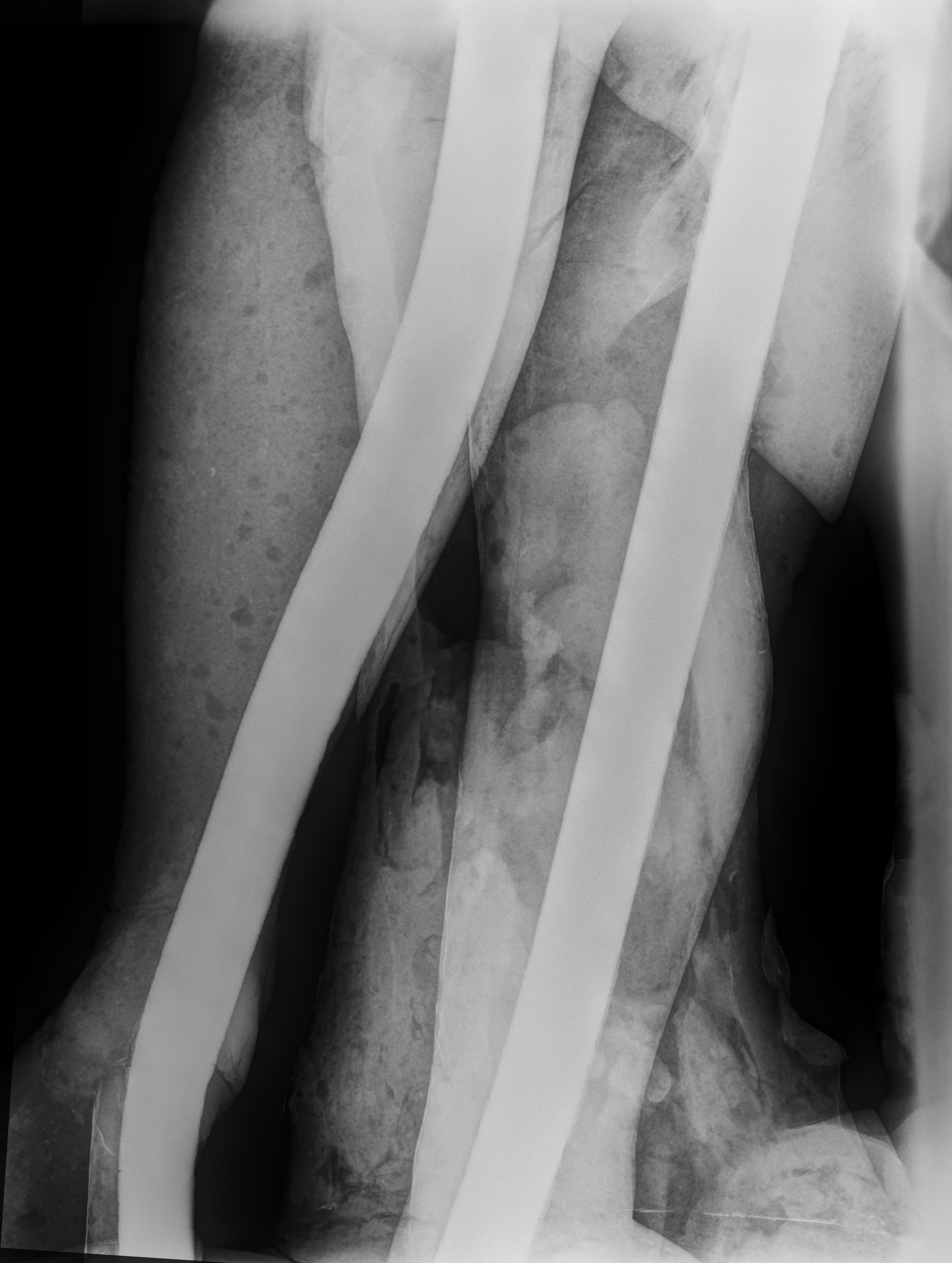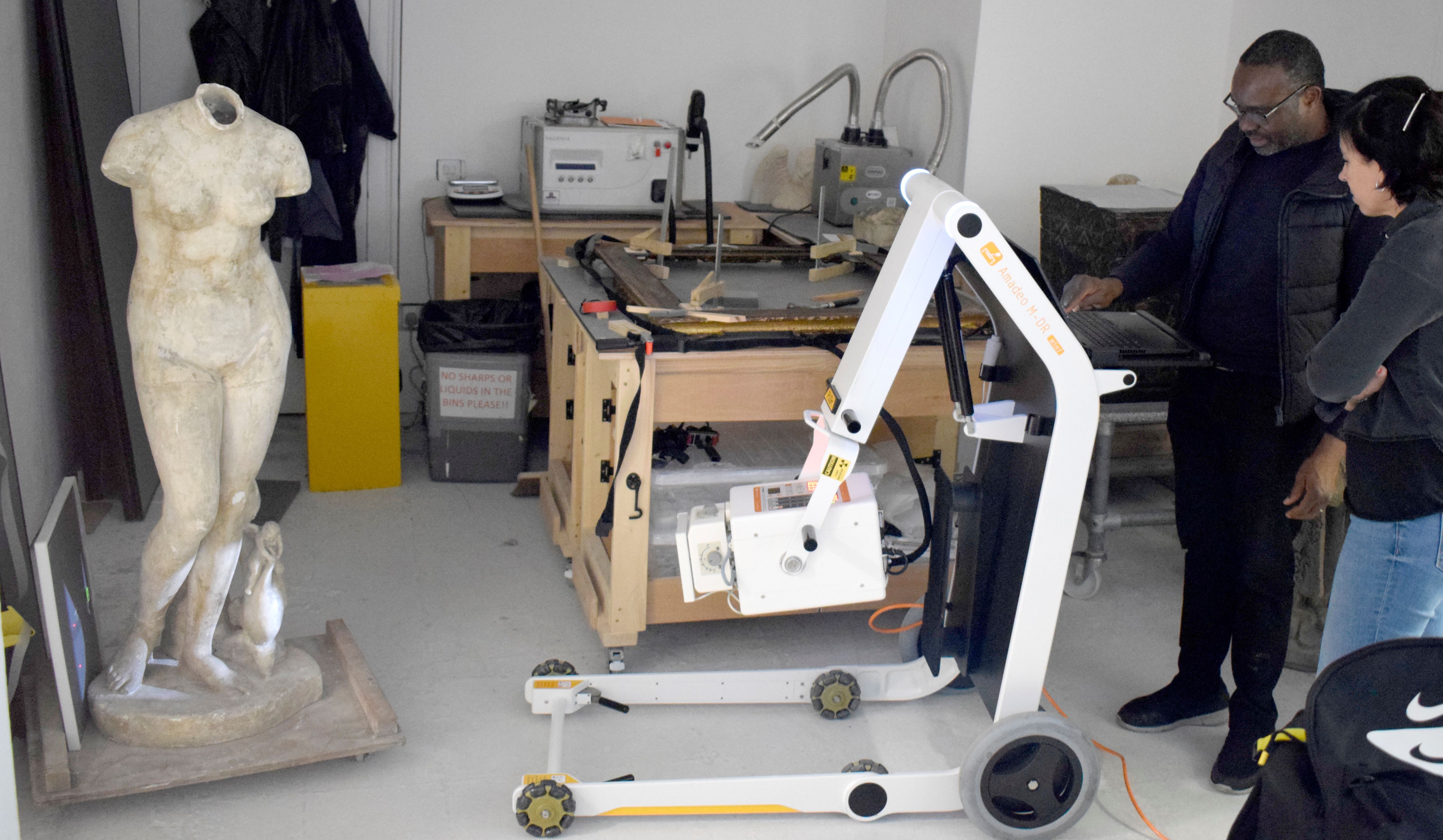
A mobile X-Ray service recently came to the Art School to support our Third Year BA (Hons) Conservation: Stone, Wood & Decorative Surfaces students in the analysis of their objects as part of their final year projects.
Read more about Ally, Yingzhen and Julieta’s experience below.
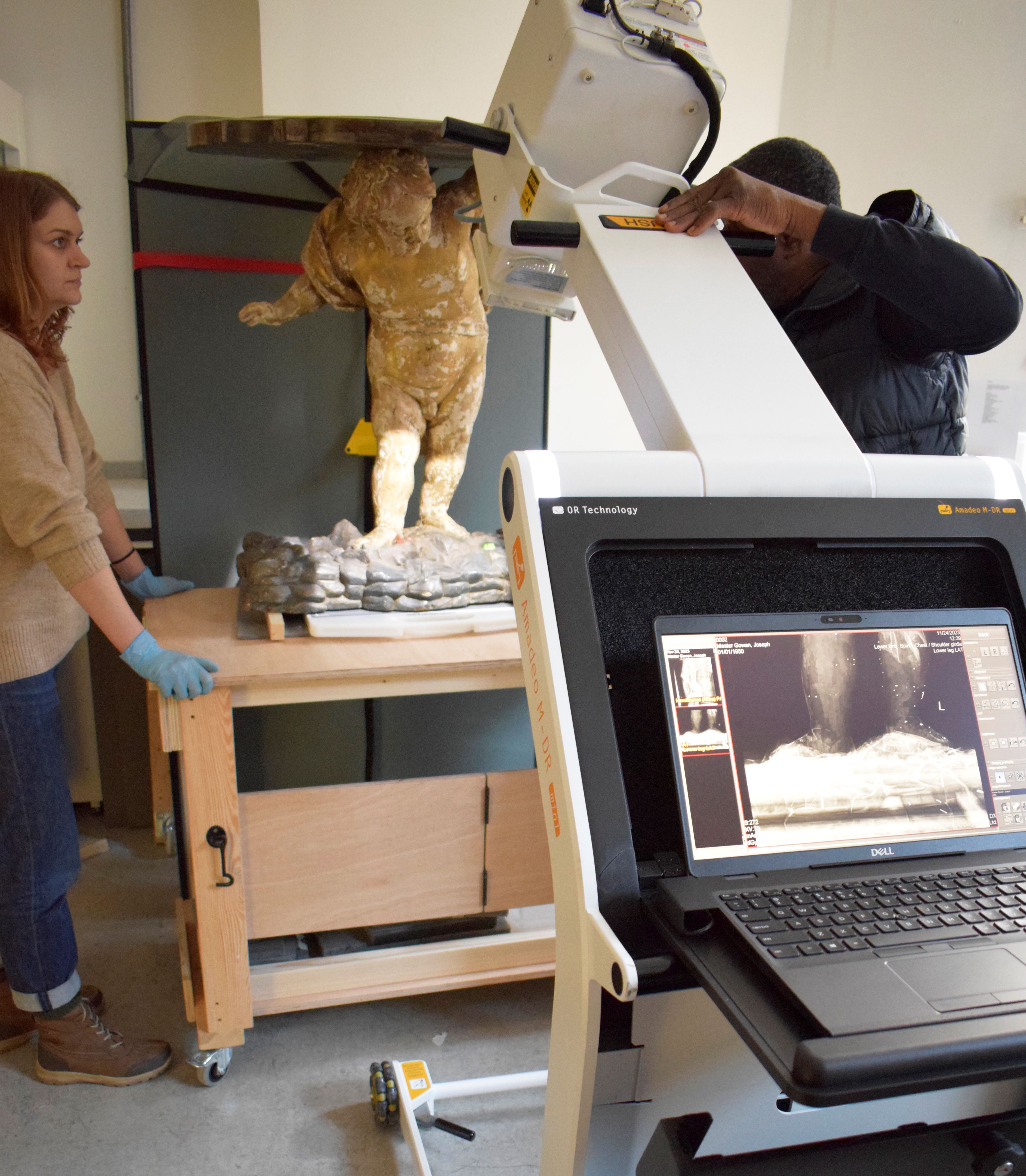
“My third-year wood project is a Baroque style table that has a large, carved and gilded putto as a central column. The body of the putto shows extensive structural damage with several cracks visible on the left side and back of the drapery. The table appeared to be structurally stable and a metal detector confirmed that metal hardware was used in previous repairs, however, the condition and age of these repairs was unknown and needed to be checked as the table must be functional when it leaves the studio. The repairs were not designed to be dismantled, so it would have been too intrusive to do so unless absolutely necessary. In this case, x-ray analysis was the perfect technique to assess the condition of these repairs to inform the treatment proposal.
X-ray images showed that the metal hardware was still intact and providing the necessary support. They also revealed that four different types of nails and screws were used, with the earliest type, a large hand wrought nail, not widely used since the 19th century, alluding to several repairs to the same area over time. X–ray images also revealed more detail about the original and later joinery, fills, and the unusual construction of the base which was built to house the putto, confirming the theory that he was repurposed into this table from a different original location.”
Ally Wingate Saul, Third Year BA (Hons) Conservation: Stone, Wood & Decorative Surfaces
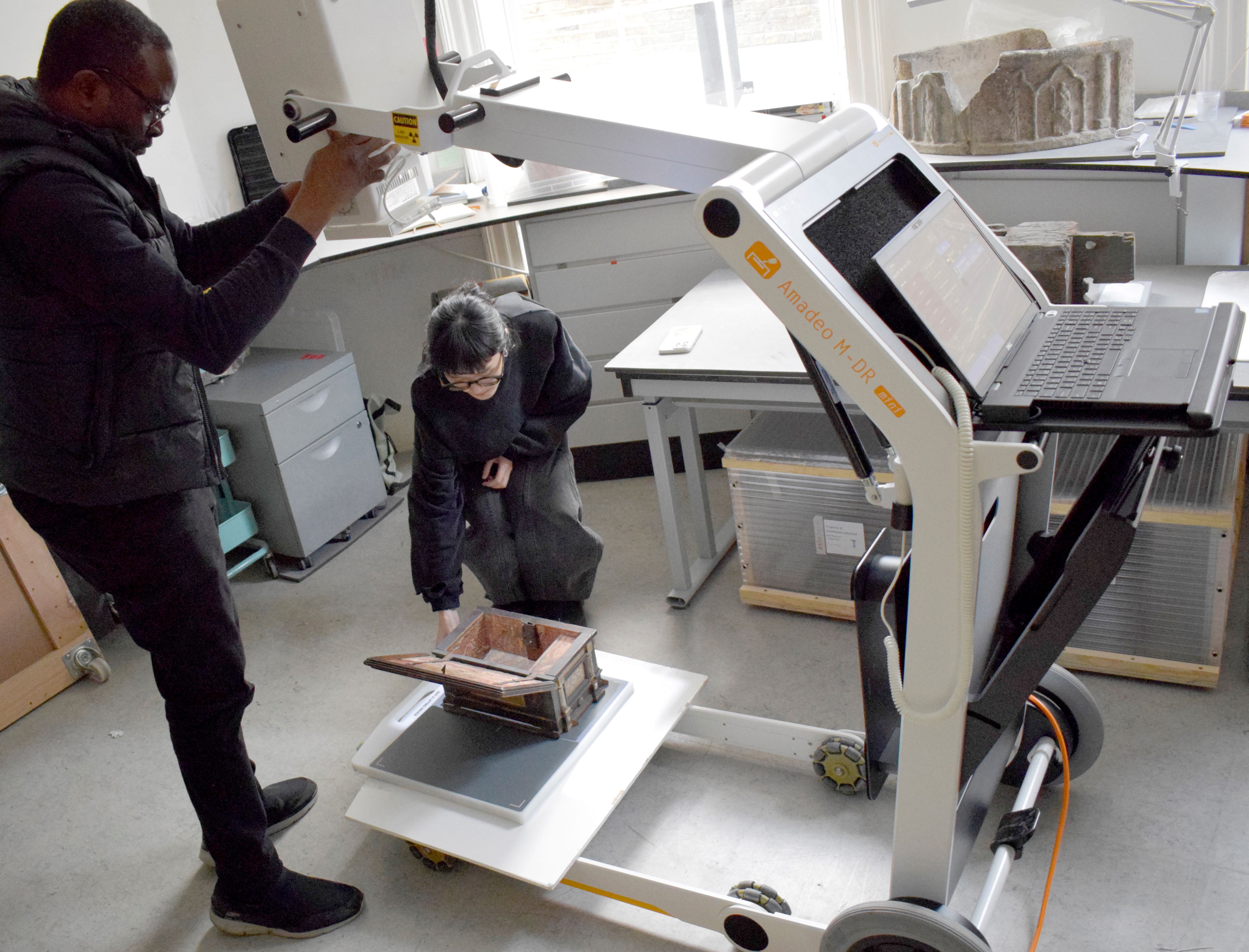
“In my third year, I embarked on a wood project, a table casket in the Renaissance style. This casket is constructed from wood, embellished with carved alabaster. It boasts a rectangular design, with architectural motifs and structurally stable. Upon opening, it reveals an array of five secret compartments, accessible through vertically sliding panels on both sides.
For a comprehensive assessment of the casket’s condition and to inform the methodology for its hinge conservation phase, I utilized the Amadeo M-DR X-ray imaging system. The resultant imagery detailed the heterogeneous assemblage of nails affixing the hinges to the casket body. This assortment ranged from slender to robust, spiral-textured nails, with one particular nail exhibiting deformation likely attributed to external stress. This irregularity might compromise the hinge’s stability. Furthermore, the variance in nail morphology intimates a blend of original and subsequent additions, ostensibly for enhancing the structural robustness of the hinge attachment.
The radiographic evidence necessitated a re-evaluation of the initial strategy to rectify the bent hinge. The removal of the deeply embedded nails posed a risk of inflicting further damage, potentially jeopardising the secure union of the casket lid and body.”
Yingzhen Liu, Third Year BA (Hons) Conservation: Stone, Wood & Decorative Surfaces
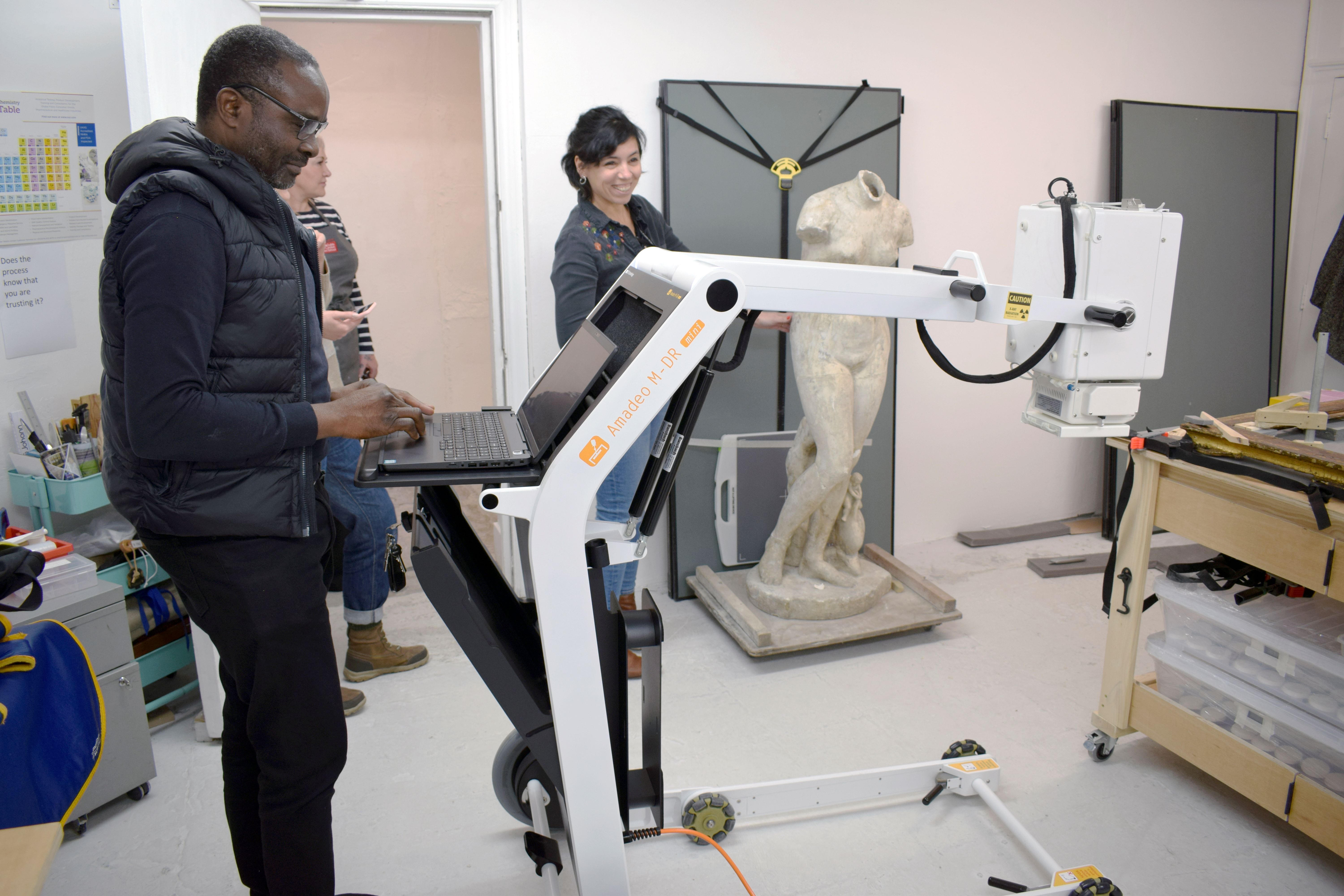
“A plaster cast of the Medici Venus is one of my third-year projects in the BA (Hons) Conservation: Stone, Wood & Decorative Surfaces course. The main concern was the structural stability; cracks on the knees and ankles suggested the sculpture might be at risk of collapse. Given that these objects are regularly used by students at the school, ensuring their mobility without causing further damage is of a great importance.
As part of the analysis to assess its condition and inform the treatment proposal, a mobile X-Ray service came to school to capture images of the sculpture. The images revealed that the armature inside the legs is not broken; it initiates at the base and extends to the knees, measuring 30 mm. The angles of inclination could be discerned using the software. Additionally, the dolphin features an armature made from a 2 mm wire, which is weaker than the main body, explaining the semi-detached fin and the missing end tail.”
Julieta Herrera, Third Year BA (Hons) Conservation: Stone, Wood & Decorative Surfaces
Interested in studying on one of our BA (Hons) Conservation or MA Conservation courses?
Find out more by visiting us at one of our upcoming Open Days. Register online.
Applications now open for 2024/25 study.
